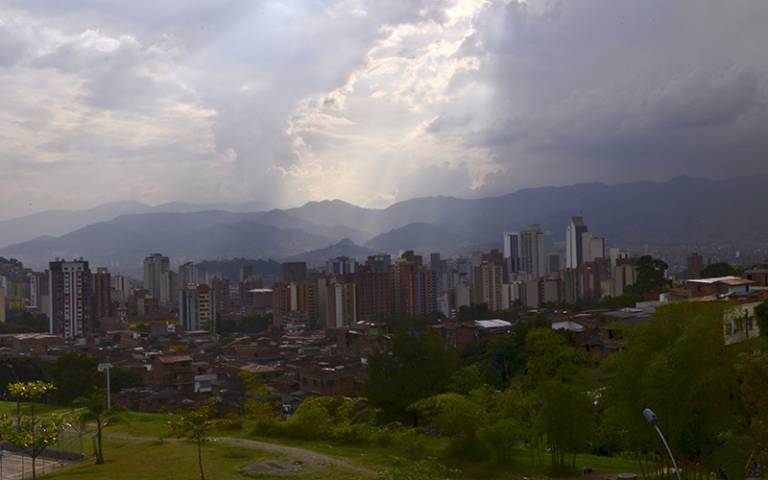DPU PhD student successfully defends thesis on levelling-up low-income neighbourhoods in Medellin
5 June 2023
Congratulations to Vanessa Galeano-Duque who has successfully defended her thesis, 'Delivering the ‘miracle’: levelling-up low-income neighbourhoods through local infrastructure and jobs activation. Medellín, Colombia, 2000–2018'

In successfully defending her PhD thesis, Vanessa argues that the city and its spatial distribution of resources act as a system of distribution and redistribution and hence, local government is afforded agency to address socio-economic inequalities.
Her thesis addresses an overlooked issue in development policy studies: the relationship between interventions by local governments and income and spatial inequalities, with a particular focus on mechanisms linking these at the neighbourhood level. The argument is built upon the development and application of a framework to analyse the emergence of local welfare regimes in urban areas that recognises interventions in public infrastructure and facilities as welfare policies with a spatially differentiated redistributive practice and social stratification effects. The framework re-scales the principle of territorial justice, assumes devolution to local governments of the implementation and design of policies, and allows for co-existence of multiple guiding rationales in policy-making. In this perspective, local government interventions in public infrastructure and facilities, rather than global market factors, are major contributors to the production and reproduction of social and economic inequalities and their spatial form in urban areas.
The discussion on the emergence of local welfare regimes in Colombia is set by asking: how have Medellín’s spatially and socially levelling urban interventions led to income variations at the neighbourhood scale between 1998 and 2018? Her findings show that in Medellin low-income neighbourhood economic upgrading is centrally related to a ‘levelling-up’ resulting from interventions in collective infrastructures and facilities, and in-situ social mobility. These interventions embody the redistributive mechanisms of the emergent local welfare regimes in urban areas operating under a re-scaled principle of territorial justice. However, they are not sufficient to alter the socio-spatial structure of the broader city, which requires a more comprehensive and long-lasting set of policies and tools. Additionally, these interventions have a neighbourhood-bound effect in the economic conditions which varies in magnitude, spatial reach, and determinants according to the socio-economic status of the neighbourhood, and the simultaneous occurrence of ‘levelling-up’ interventions in mass-transport and connectivity.
The research is developed in three main stages, the first contrast the rhetoric around ‘social urbanism’ with data about investments undertaken by Medellín and supports the hypothesis about the existence and significance of ‘spatially and socially levelling urban interventions’. The second stage describes the process of change in neighbourhood incomes, acknowledging the city’s long-standing and spatially structured inequality along with the influence of Colombian individual inequality and urban trends, city-wide economy trends and micro-processes related to the movement of people as triggers of the observed change. Finally, she unpacks the mechanisms linking the existing regularity between the places of intervention through ‘spatially and socially levelling urban interventions’ and neighbourhood income change. In so doing, she appeals to the experience and perception of long-term residents and leaders of two areas of Medellín with similar urban development paths but who had been exposed to different sets of interventions.
In conclusion, she challenges the conventional mechanisms theorised as being sufficient to explain urban economic inequality and neighbourhood change by accentuating the role of local governments, physical conditions and in-situ social mobility (change in the economic circumstances of long-term residents). Changes in urban segregation and neighbourhood-level economic conditions are geographically uneven, not attached to city-wide economic or inequalities trends, and are not solely determined by population movement or turnover (as widely overstated by multiple theories on neighbourhood change). Also, the practices of the local welfare regime do not necessarily mean activating artificial incentives for the relocation of population groups or firms and might serve as a compensatory system benefitting low-income population groups outside of contributory or means-tested base welfare systems. Expanding available collective public facilities, and through them the access to in-kind social services, to previously neglected communities enable virtuous economic circuits of local job creation and business opportunities, increase the labour market participation of women, raise expectations, change mindsets and enable job matching mechanisms for local residents with opportunities elsewhere in the city.
 Close
Close

